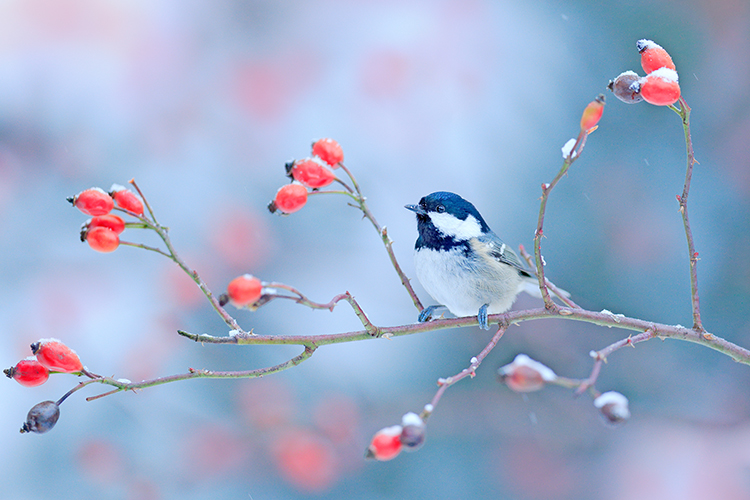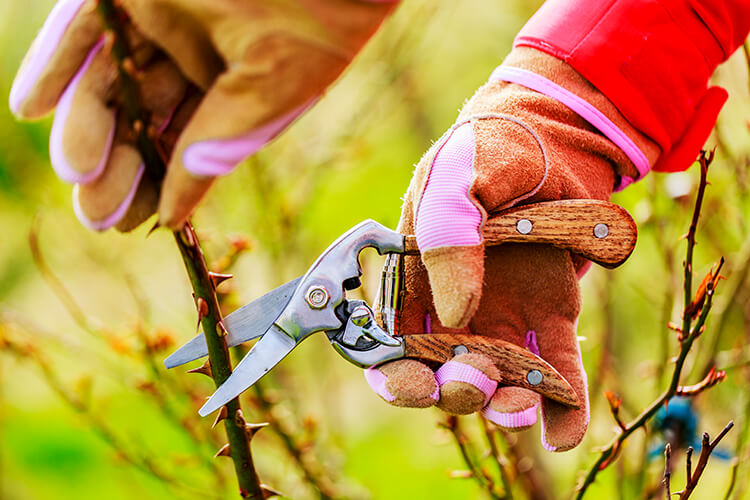
Add Winter Interest to Your Gardens
Most of us here in Southwestern Ontario prefer the warmer months. But when the snow falls it’s nice to still be able to enjoy your outdoor landscape, even from indoors. Visual interest in winter doesn’t have to come just from urns, wreaths, and garland that gets taken down shortly after Christmas. Hardscaping and plants provide cold-weather beauty that lasts the all season long. Below, we explore various landscaping options whose function and good looks extend well past our patio-dwelling days.
EVERGREENS
Conifers are typically top of mind when a landscaper wants to add year-round life to a garden because most keep their foliage throughout the cold months. They come in a wide range of sizes, shapes and shades of green that will compliment any home’s exterior. Some of the more popular conifers in our region are from the pine, spruce, and fir groups. And while they come from a different conifer family, cedars, cypress, and junipers, with their splayed branches, aromatic wood, and interesting bark, are also very popular.
But there’s more to evergreens than just needles and cones. Other conifer families are broad-leafed and/or fruit-bearing. These shrubs tend to have an appearance that more closely resembles a deciduous plant, but they don’t shed their leaves. Beautiful examples of broadleaf evergreens that thrive in the hardiness zones of Southwestern Ontario are Euonymous, Boxwood, and the festive favourite, Holly.
Beyond conifers, there are many trees and plants that brown or lose their leaves every year that can add structure and interest to the outdoors.
Ornamental grasses are a great example of plants that turn brow but maintain their structure through the winter and make a lovely, wispy addition to a winter landscape.
Purple Coneflower, Black-Eyed Susan, Hydrangea, and Autumn Joy Sedum shed their foliage but maintain flower stalks and/or seed heads that look beautiful under a blanket of snow.
Mountain Ash, Canadian Serviceberry, and Winterberry (a popular Holly variety) are great choices for adding pops of colour to your winter landscape. Tip: Holly berries will only form if male and female plants are established together, so be sure to purchase one of each to avoid disappointment.
Many trees offer visual interest with noteworthy texture or colour. Birch trees have a white, papery bark whose beauty is revealed after it sheds its canopy of leaves in the fall.
Stems and twigs can provide bursts of colour ranging from bright green to orange and red. In our region Dogwoods are a common shrub that add vivid colour against the white snow. And a funny-looking tree with a funnier name – Harry Lauder’s Walking Stick – adds twisty, highly textural support for freshly fallen snow.
HARDSCAPING
Don’t discount stone structures and fixed furniture as difference makers where visual interest is concerned. These hardscaping elements can add colour and texture to otherwise flat terrain.
ADDITIONAL BENEFITS
Besides enhancing the beauty of your outdoor space, landscaping and hardscaping can also play more functional roles.
Attracting birds
Trees and shrubs bearing berries or situated close to suet and seed will provide nourishment for birds including Juncos, Cardinals, Blue Jays, Nuthatches, Chickadees, Finches, Woodpeckers, Doves, and Sparrows. Dense, mature evergreens can also offer ideal shelter.
Privacy and windbreak
A properly situated row of evergreens ensures year-round privacy and can also act as a windbreak and natural snow fence, sheltering your yard from cold winds and drifting snow.
Beautiful, day and night
Outdoor lights aren’t just for the holidays. White mini lights can define the shape of a small tree or shrub. Consider lighting natural and hard elements with floodlights or projection lamps for a different but equally beautiful aesthetic at night.
Adding visual interest to outdoor spaces increases the appeal, value, and enjoyment of your home. As long as you’re selecting plants and varieties that are appropriate for your hardiness zone, your landscaping can help beautify your home not just in the warmer months, but throughout the year.


